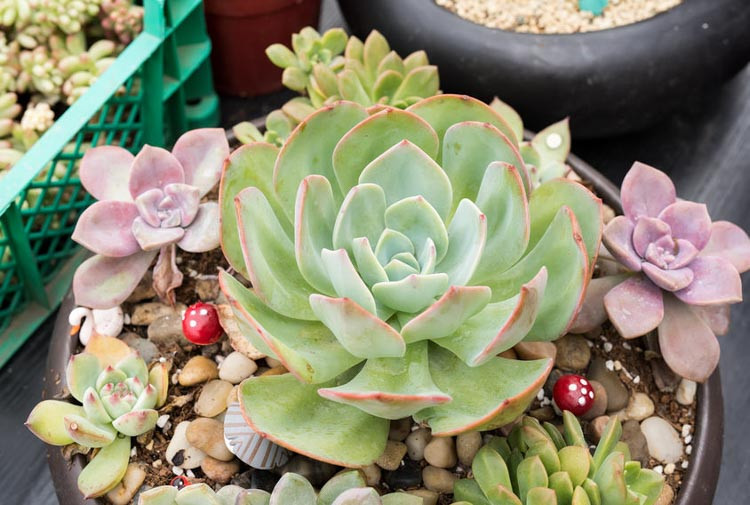Echeveria
Echeveria is a large genus of succulent plants in the Crassulaceae family, native to semi-desert areas of Central America, Mexico, and South America. This group of plants is celebrated for its distinctive rosette growth habit, a configuration that sees each plant’s leaves arranged in a compact, symmetrical circle around a central point.
Size: The rosettes range in size depending on the species, with most averaging between 2 to 6 inches (5-15 cm) in diameter, although some species can reach up to 12 inches or more.
Hardiness: Echeveria plants are generally suitable for USDA hardiness zones 9-11, being able to tolerate temperatures down to 20°F (-6.7°C). They are frost-sensitive and require protection in colder climates, often grown as indoor houseplants or in a greenhouse where temperatures can be controlled.
Flowers: The flowers of Echeveria are a unique spectacle in their own right. Typically blooming from late winter to spring, the plants produce tall, arching inflorescences from which dangle numerous bell-shaped or tubular flowers. Depending on the species, these flowers can exhibit an array of colors, including vivid shades of red, pink, orange, and yellow.
Uses: Echeveria plants serve numerous uses in both residential and commercial settings. Their low water requirements and high drought tolerance make them an excellent choice for xeriscaping and other low-maintenance garden designs. Additionally, their intriguing forms and vibrant colors make them popular in container gardening, where they can be combined with other succulents or used as stand-alone specimen plants.
Deer and Rabbits: Their thick, fleshy leaves are typically unappealing to deer and rabbits, making them a reliable choice for gardens in areas frequented by these animals.
Pollinators: Some species of Echeveria are also known to attract beneficial pollinators, like bees and hummingbirds, thus contributing to local ecosystems.

